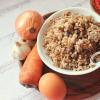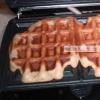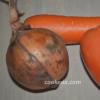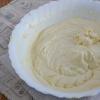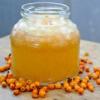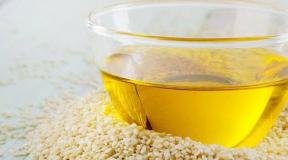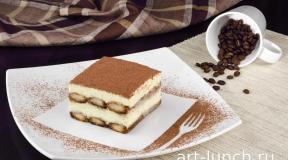Dry yeast for mash: saf-levure and pakmaya. Recipe for making mash with Saf Levure and Saf Moment yeast Red yeast Saf Moment dosage
All housewives are familiar with the dry baker's yeast Saf-moment and Saf-levure; it must be said that for novice moonshiners this is the best option to start with. This dry yeast is inexpensive, available in any supermarket, and quite predictable in terms of results, the main thing is to know the proportions, that is, how much to dilute and for what amount of mash.
Anyone, even a novice distiller, knows that moonshine is obtained as a result of distillation (distillation) of mash, which is a product of fermentation of sugar and yeast. Consequently, moonshine without yeast will not work, since it is the microorganisms contained in them that cause the fermentation process, which converts glucose into alcohol. There is an opinion that it is rare to make mash with dry yeast. However, this opinion is erroneous; you just need to know some nuances and strictly follow the recipe and proportions.
The role of yeast in the production of mash
Yeast is an element without which the process of producing alcohol is not possible in principle. In addition, they are living microorganisms that require careful handling. Especially when observing temperature conditions. Low temperatures do not have any particular effect, but high temperatures (above 35 degrees) can completely destroy them. This important point must be taken into account in the production cycle.
It is generally accepted that in the moonshine brewing process it is best to use special alcoholic yeast. The use of alcoholic yeast usually does not cause any difficulties; the manufacturer indicates the required amount of sugar on each package. However, their use has its disadvantages. First, they can be difficult to find. Secondly, they have a limited shelf life, and their price is quite high. A good alternative to alcoholic yeast is baker's dry yeast.
Braga with dry yeast
When deciding which yeast is best to use for mash, you don’t need to worry too much; when used dry, its quality is in no way inferior to that prepared using raw ones. The French Saf-Levure, in 100 gram packaging, and Saf-Moment in 11 gram bags are perfect for this purpose. They are used for baking, so you can buy them in almost any store. When adjusting the recipe for moonshine with dry yeast, you need to take into account their proportions to raw yeast, it is approximately one to five or six.
A distinctive feature of the technological process using dry yeast is abundant foaming. Therefore, using dry yeast requires a defoamer. As a defoamer, some use chemical or pharmaceutical preparations, as well as household chemicals, such as baby shampoo, the use of which we do not recommend. Do not try to remove foam by stirring, as this will only make the situation worse.
You can use dry cookies or crackers.
Saf-Moment yeast can also be an excellent defoamer. The packaging of Saf-Moment differs in quantity (a bag contains 11 grams), so the ratio should be as follows: three packs of Saf-Moment are needed for one package of Saf-Levure.
Another feature of dry yeast is that it must be activated before use; moonshiners call this process “fermentation.” They are poured into 0.5 liters of warm water, allowed to stand for a while, and then gently stirred. The yeast thus revived is left for an hour.
Mash making technology
Braga is a raw material for the subsequent production of a stronger drink - moonshine. When making mash, you can use the following ingredients:
- sugar (making sugar mash is the easiest to make at home);
- berries and fruits;
- rye, wheat, potatoes (starch-containing raw materials, which malt enzymes help process into sugar).
Classic recipe for sugar mash with Saf-Levure and Saf-Moment yeast
For every kilogram of sugar, the recipe calls for 5 liters of water and 20 grams of Saf-Levur yeast. That is, for a classic aluminum tank, the recipe should contain the following amount of ingredients:
- water at room temperature – 30 l;
- sugar – 6 kg;
- 1.5 packs of Saf-Levur (150 g);
- 1 pack of Saf-Moment.
First, pour most of the water (about 25 liters) into the prepared can and pour in the sugar. It is important to stir the sugar well, otherwise it will settle to the bottom and will not take part in the fermentation process of the mash. Add the pre-fermented Saf-Levur and pour out the remaining water, mix carefully and place in a warm place. There is no need to close the lid tightly to avoid an explosion; it is better to just cover it.
For the first few hours, you need to carefully observe the process of foam formation. If the foam seems excessive to you, sprinkle it on top with Saf-Moment yeast, crumbled cookies or breadcrumbs. After this procedure, the foam will be extinguished, and then fermentation will continue vigorously, but without the same problems. Close the lid and continue to observe the fermentation process.
It is not necessary to place a water dispenser on the sugar mash, but it can help if you are making moonshine in an apartment. In this case, the water dispenser hose can be routed into the window, which will relieve you of the unpleasant odor.
The temperature determines how long it takes for fermentation, and the quality of the yeast and other mechanical factors also influence it. The optimal temperature is 18 - 30 degrees. The lower the temperature, the slower the fermentation process will occur. High temperatures will kill the yeast, preventing them from processing the sugar.
If you stir the mash, fermentation will speed up, but this must be done carefully so that foam does not begin to form again. The stirring spoon must be clean, otherwise the mash will sour. If you did everything correctly and followed the recipe, then the mash will definitely turn out.
Features of making moonshine from starch raw materials
Grain moonshine is considered the most noble strong drink. It is prepared much more complicated than sugar. But the result will be worth it. The grain contains a high content of starch and enzymes are needed to convert it into sugar.
Sugar is obtained from starch using malt, or using ready-made enzymes:
- amylosubtilin – thins the wort;
- glucavamorin – promotes saccharification.
The technological process of saccharification must be approached carefully, observing the recipe and temperature conditions. At high temperatures, the enzymes will be destroyed; at low temperatures, the saccharification process proceeds slowly and may not be completed. After fermentation is complete, it is better to quickly cool the container to prevent bacteria from multiplying in the warm, slowly cooling wort, which can lead to infection and lactic acid fermentation - the mash will simply turn sour. After cooling, the wort is fermented with Saf-Levur yeast, approximately 10 g per 10 liters of tank contents.
In addition to the fact that enzymes are needed in the production of grain moonshine, there is another feature in its distillation. It cannot be put into distillation on a classic moonshine still, since the grain mash is very thick and can burn to the walls of the cube, which will ultimately ruin both the finished product and the equipment. The distillation of the wort must be carried out using steam, a PVC (steam-water boiler) or in a water bath.
How to determine whether mash is ready for distillation
There are several methods for determining the readiness of mash for moonshine; to obtain a more accurate result, you can use them all at once.
- by time. How long the fermentation process will take depends on many factors: the quality of ingredients and water, external factors (temperature and humidity). On average, sugar mash ferments for 5-14 days. The fermentation period of starch mash is much shorter - 3-5 days. The results of this method are very approximate, so you cannot rely on it completely.
- taste. This method is the most effective; in addition, it makes it possible to determine not only readiness for distillation, but also to evaluate the quality of the resulting product. Braga ready for distillation will have a bitter aftertaste. The sweetish taste of the mash means that the tremors have not yet fully completed their task and have not processed all the sugar into alcohol. It needs to be improved. If the temperature regime was not observed, the yeast could die without producing all the sugar, and the fermentation process would stop. To resume the fermentation process, you need to add a new portion of yeast and place the container in a room with more suitable climatic conditions.
- by appearance. In the finished mash, foam formation does not occur, the characteristic hissing and the release of carbon dioxide stops. Clarification of the mash begins due to the fact that the fermented yeast sinks to the bottom.
- using a burning match. During active fermentation, carbon dioxide is released. Bring a lit match to the container with mash. If it burns, then the fermentation process has ended and you can begin the subsequent distillation of the mash.
- using a hydrometer - this is the most professional and accurate method. If you are serious about moonshine brewing, then you simply need this device.
Have a nice moonshine!
Many housewives avoid recipes for yeast baking, citing the fact that the dough is too capricious and does not rise well. In practice, it turns out that the problem is low-quality yeast, which is the basis that ensures the fluffiness, softness and taste of the finished product.
Today there are a lot of yeast from different manufacturers on store shelves, but not all of them are good in practice. We suggest considering a proven product - Saf-Moment yeast.
Operating principle and reasons for failure
Yeast is one of the oldest “tamed” microorganisms. They have come a long way, accompanying humanity at every stage of development. From the most primitive sourdough, which consisted of fermented unleavened dough, yeast moved into a convenient dry form, which is perfectly stored and allows you to prepare baked goods in an ordinary home kitchen.

The principle of action of yeast is as follows - it remains dormant until it enters a humid environment. Some of them need to be “awakened” by placing them in water, while Saf-Moment instant yeast can be added to flour and immediately kneaded into the dough - they will perfectly find all the water they need in the total mass.
All recipes for yeast baked goods contain sugar or its analogue, since this is what the yeast feeds on, releasing alcohol and it is the latter that ensures the finished baked goods are soft and airy. There is also no need to be afraid of alcohol - when the dough is heat treated, it evaporates.
If the dough refuses to rise, then the main reason is the yeast. The main requirement for dry yeast is sealed packaging. They become exhausted from contact with the external environment. In order to check for viability, place them (1 teaspoon) in a glass, fill with warm water and add 1 tbsp. spoon of sugar. Cover the glass with a lid and let stand for 5-10 minutes. If a foam cap forms on the surface of the water, it means the yeast is active and can be used. Next we will look at how you can use Saf-Moment dry yeast. The recipes given below are not complicated, but can perfectly diversify the menu with minimal labor.
Bread is the head of everything
Beginners should start their victorious march through yeast baking recipes of varying degrees of complexity with bread. There are a number of reasons for this:
- Simplicity. Basic bread dough consists of flour, yeast, sugar and salt. As you can see, it is more difficult to get lost in three pines than to get lost in a grocery list.
- Composition transparency. Modern bread, which is offered in stores, often has a controversial composition, containing an abundance of additives that cannot be called beneficial for the body. When making homemade bread, you are always sure of the quality.

- Flexibility. Once you have mastered the basic recipe, you can always change it by changing the flour or adding other products to taste. In this case, Saf-Moment yeast favors innovation, and the result will not let you down.
So, to make bread, take:
- warm water - 1 glass;
- dry yeast - 1 teaspoon;
- sugar - 1 tbsp. spoon;
- salt - 1 teaspoon;
- flour - 3 cups;
- vegetable oil - 8 tbsp. spoons
The volume of the glass indicated in the recipe is 200 ml.
Preparation
Mix water, yeast and sugar in a container of suitable volume. Cover and wait for the foam to form. If you are in a hurry, you can skip this step by using Saf-Moment instant yeast - just mix all the products.
Add butter, salt and flour to the yeast mixture. The latter should be poured in gradually, achieving a soft, elastic dough. Knead for 5-7 minutes. It’s not scary if there is excess flour left - it differs in its “strength”, some require more, and some less. Focus on texture.
Place in a bowl, cover with a towel and let rise in a warm place for an hour. The dough will increase approximately 2-2.5 times.
Divide the risen dough into two parts.
Roll each part into a rectangle, then roll it into an even roll.
Place the rolls on a baking sheet lined with baking paper or sprinkled with flour. Cover the pieces with a towel and let them rise for an hour.
Preheat the oven to 220 C.
As soon as the rolls are ready, make transverse shallow cuts on them with a sharp knife and bake for 25-30 minutes until golden brown.
Wrap in a kitchen towel and let cool completely.
If you plan to use gluten-free flour, then you should use Saf-Moment dry yeast when baking, since it can provide a fluffy finished product even without the usual abundance of gluten.
Viva la Pizza!
This Italian “dish of the poor,” beloved all over the world, has not passed over the tables of Russian residents. In most cases, all that remains of pizza is the name, since everyone prepares it based on their own vision of beauty. In most cases, the “beautiful” lies on ready-made puff pastry, which is also quite tasty, but does not convey the richness of the filling. The “correct” base is made from a dense base; it should be thin, but soft under the filling and with crispy edges.

“Saf-Moment” (yeast) is perfect for preparing this dough. Pizza recipes are endless and at the same time quite subjective, since everyone puts the foods they like on the flatbread. Therefore, to get excellent results, you must adhere to the following recommendations:
- The right dough! We'll give the recipe below.
- Quality products. Easy-to-melt cheese and natural tomato sauce - no liters of mayonnaise or ketchup.
- Using several - something that melts easily (for example, mozzarella) and stretches, plus a flavorful cheese (for example, Parmesan).
Pizza dough
To prepare a delicious universal pizza base, take:
- flour - 500 grams;
- yeast "Saf-Moment" (ideal for pizza) - 5 grams;
- sugar - 1 teaspoon;
- salt - 1/2 teaspoon;
- warm water - 250 ml + 4 tbsp. spoons;
- olive oil to grease the bowl.
Mix yeast, sugar, 4 tbsp. spoons of water and 4 tbsp. spoons of flour (take it from the total amount). Knead a homogeneous stiff dough. Cover the resulting dough with a towel and let it stand in a warm place for half an hour.
Sift the remaining flour into a heap, add the appropriate dough, water and salt, knead for 10-15 minutes until a homogeneous, firm and elastic mass is obtained. Despite the fact that the dough made with Saf-Moment yeast can be suitable without dough, you should still not neglect it in this recipe.
Grease a bowl with oil, place the dough in it and cover with a kitchen towel.
Let it brew for an hour, the mass will double.
Punch down the dough, divide it in half - two pizza blanks are ready.
Roll out each of them individually thinly, place on baking paper or in a frying pan sprinkled with flour. Do not form sides.
Brush the dough base with the sauce, slightly moving away from the edges, and add the filling to taste. Bake at 230 C until done.
Let's say a word about breakfast
This meal includes food rich in complex carbohydrates and fiber, as they provide the necessary energy boost. Pancakes stand out among breakfasts - they are tasty, healthy with certain additives and cook much faster than the same pancakes. Housewives especially appreciate pancakes made with yeast, as they always turn out fluffy and porous.

Pancakes with apples and rolled oats with yeast:
- water - 4 tbsp. spoons;
- dry yeast - 10 grams;
- honey - 1 tbsp. spoon;
- raisins - 2 tbsp. spoons;
- large green apple - 1 piece;
- rolled oats - 4 tbsp. spoons;
- milk - 100 grams;
- flour - 100 grams;
- salt - a pinch;
- eggs - 1 piece;
- vegetable oil - 30 ml.
Preparation
Dissolve yeast and honey in water. Cover with a napkin and place in a warm place.
Wait until the mass doubles.
Mix all dry ingredients in a separate bowl.
Add yeast, egg, milk and oil to the same bowl. Stir until smooth and cover again with a napkin.
The mass should double again.
Peel the apple and cut into small cubes.
Wash and dry the raisins.
Add fruit to the risen dough.
Fry the pancakes over medium heat until cooked through, lightly greasing the pan with oil as you go.
Serve immediately.
It is worth noting how versatile Saf-Moment yeast is. The data we have given above can be changed depending on your preferences. For example, you can add more milk to the pancake batter and make yeast pancakes.
For tea
We can't forget about the pies. There are endless variations of them.

We will give a recipe that is suitable for both portioned pies and buns, and for a large pie:
- flour - 700 grams;
- warm milk - 250 grams;
- melted butter - 60 grams;
- eggs - 2 pcs;
- salt - 2 pinches;
- sugar - 40 grams (if the filling is planned to be unsweetened, then reduce its amount by half);
- yeast "Saf-Moment" - 20 grams.
Knead the dough from 400 grams of flour, milk and yeast. You should get a stiff, homogeneous dough. Place it in a bowl, cover with a kitchen towel and place in a warm place. After an hour, cracks will appear on the surface of the dough, which means it’s time to use it.
Mix eggs, salt, sugar, butter separately. Add to the dough and stir until smooth.
Sift the remaining flour onto the work surface, place the dough in it and knead into an elastic, soft, homogeneous dough. It is recommended to stir for at least 5-7 minutes.
Place the mixture back into the bowl, cover and let it double in volume. This will take approximately 1-1.5 hours.
That's it, the dough is ready. Using Saf-Moment yeast for pies and pies, you can be sure that the baked goods will not fail and will not settle like a stone.
A little about alcohol
Of course, we will talk about mash. Some general information: mash is an alcoholic drink whose strength reaches an average of 15 degrees. Obtained as a result of fermentation.

What does fermentation provide us with? That's right, yeast.
Basic sugar mash recipe:
- sugar - 1 kg;
- dry yeast - 20 grams;
- water - 5 l.
Heat water (4.5 l) and dissolve all the sugar in it. This is very important because... the sugar that settles to the bottom will not participate in the fermentation process.
Separately, dissolve the yeast in the remaining warm water, add 4 tbsp. spoons of sugar. Let the yeast come to life (this will take no more than an hour, provided that you are using Saf-Moment yeast for your mash).
Mix the sugar solution with the revived yeast and pour into containers of suitable size. Place in a warm place, but do not close it tightly - otherwise the containers may explode from the pressure.
The drink matures in 7-10 days. After this period, carefully pour the mash into storage vessels, being careful not to touch the sediment.
It's hard to believe that dry yeast has been around for over 40 years. They have been produced by the international company Lesaffre since 1973 and throughout their existence have become the leading product on the global dry yeast market. Thousands of bakers from different backgrounds, cultures and areas of expertise have relied on Saf-Moment yeast for generations. And today this product meets all the high demands of housewives: quick and uniform rise of dough and the absence of an unpleasant yeast odor. We'll tell you more about how to work with instant yeast in our article.
Difference between dry yeast and compressed
Yeast is a single-celled organism, a biological leavening agent for dough. They come in dry (active and fast-acting granules) and pressed (regular, live). In general, dry and compressed yeast are the same product with a similar effect. The difference between them lies only in the production method: a significant part of the moisture is removed from dry yeast to obtain the required consistency. Under certain conditions, they begin to actively multiply, promoting the fermentation process, raising the dough, making the baked goods fluffy and beautiful.
According to most housewives, the best brand of the “dry” group is “Saf-Moment” (yeast). Recipes for pastries, pizza, and bread that use dry yeast involve adding it directly to the dough, without preparing liquid dough. This significantly speeds up the baking process.
Varieties of yeast "Saf-Moment"
The Lesaffre company produces two types of dry yeast: active and fast-acting. There are significant differences between them:
- Active yeast "Saf-Levur" is inactivated yeast cells coated with a membrane. In appearance, they resemble granules of different diameters. To activate them, you need warm water and about half an hour of free time. Active yeast dissolves in warm water, where the fermentation process begins.
- Dry yeast "Saf-Moment" is fast-acting - living cells that retain their activity thanks to vacuum packaging. They are not enclosed in a shell, do not require prior dissolution in warm water, and their activation occurs when directly combined with other ingredients. In addition to the traditional dry yeast of this group, there is Saf-Moment yeast for pizza and baking.

The difference between classic and other types of instant yeast lies in the additional ingredients that are included in their composition. For example, baking yeast contains vanillin and beta-carotene, which give baked goods a unique aroma and contribute to a golden crust. Pizza yeast contains onion powder, which gives the finished dough an interesting onion aroma.
Advantages of Saf-Moment yeast
It is impossible not to note the undoubted advantages of Saf-Moment yeast:
- Lesaffre products are made exclusively from high European quality raw materials and do not contain preservatives.
- For the production of yeast, specially developed strains of the yeast Saccharomyces cerevisiae are used.
- "Saf-Moment" is the same compressed yeast, but without the moisture content, which has previously been removed from it. At the same time, vacuum packaging allows the yeast cells to maintain their viability.
- Instant yeast "Saf-Moment" does not contain GMOs and casein, but only class mushrooms Saccharomyces cerevisiae and emulsifier E491, which reduces their activity in packaging.
- Yeast is mixed directly with flour, without dissolving in water. A bag weighing 11 g is designed for 1 kg of flour.
Features of working with dry yeast

There are special rules for working with yeast and storing it, compliance with which will preserve its activity and improve the quality of baked goods:
- After opening the vacuum package, the yeast loses its activity, so the opened bag is not stored, but used immediately.
- Salt neutralizes the effect of dry yeast, so it is recommended to mix it with other ingredients only when the dough is already kneaded, as a last resort.
- The dough works well when it contains a sufficient amount of liquid, which enhances the action of yeast microorganisms.
- When working with instant yeast, follow the instructions on the package. If you add more yeast to a given amount of flour than necessary, the process of rising the dough will occur faster, but the baked goods may also have an unpleasant aftertaste.
- Yeast "Saf-Moment" is produced in vacuum packaging and does not require special storage conditions. In order for them to retain their properties, you just need to make sure that no moisture gets inside the packaging.
Yeast "Saf-Moment": recipe for bun dough

You can make delicious and aromatic buns from dough based on dry instant yeast. The baking sequence is as follows:
- Beat eggs (2 pcs.) with sugar (100 g) until foamy. Melted butter (75 g), milk (250 ml) and salt (1 teaspoon) are gradually introduced.
- Sifted flour (5 tbsp.) and dry yeast "Saf-Moment" are mixed and gradually introduced into the dough.
- The finished dough is placed in a pan with walls greased with vegetable oil and sent to a warm place for 50 minutes or until it doubles in volume.
- The risen dough is rolled out into a rectangle the size 40 × 50 cm. The top layer of dough is greased with melted butter, sprinkled with sugar (150 g), cinnamon (2.5 tbsp.) and raisins (½ tbsp.).
- The dough with filling is rolled into a long roll and cut into 12 pieces.
- Place the buns in a rectangular pan and wait until it doubles in size.
- Place the enlarged buns in the oven preheated to 200 degrees for 15 minutes.
Pizza recipe
Pizza dough is prepared by mixing the ingredients: flour (350 g), yeast (11 g), sugar (25 g), salt (2 g), water (250 ml), olive oil (1 tbsp). The kneaded dough is placed in a bowl and “ripened” under a towel for half an hour. Immediately, without preliminary preparation of the dough, “Saf-Moment” (yeast) is added to it. Pizza dough recipes are always similar, but the filling can be different, according to taste preferences.

When the pizza dough is ready, roll it out on the table in the shape of a circle, place it on a baking sheet covered with baking paper, and distribute the filling. First of all, the dough layer is smeared with tomato sauce (2 tablespoons), oregano is sprinkled (½ teaspoon), after which chicken fillet (150 g) cut into pieces and canned pineapples (120 g) are laid out. The top of the pizza is sprinkled with grated cheese (150 g). Cooking time in the oven is 20 minutes at 200 degrees.
Yeast "Saf-Moment" for mash

The process of preparing mash based on dry yeast includes several stages:
- Water preparation. To prepare mash, purified, bottled or home-filtered water with a temperature of 28-30 ° C is suitable. It must sit for at least 4 hours before use.
- Yeast activation. For this, active yeast "Saf-Levure" (100 g) is used. To activate, you need to pour them into a separate container and add 500 ml of boiled water. After 20 minutes, a characteristic “cap” will appear on the surface of the liquid.
- Dissolving sugar. 5 kg of sugar is poured into the fermentation container and filled with 15 liters of water. After this, the sugar is thoroughly mixed until it is completely dissolved. Then the dough is poured into the container, another 10 liters of water and rye bread (200 g) are added.
- Defoamer. Since a large amount of foam is released during the fermentation process, it must be extinguished. For this purpose, Saf-Moment yeast is used at the rate of 4 g per the above amount of ingredients.
- Fermentation. The duration of mash preparation is about 10 days. During this time, it should become lighter and sediment will fall to the bottom of the container. After this, it can be used for distillation.
![]()
Universal yeast, with which you can prepare any yeast baked goods, as well as homemade traditional drinks. Best suited for baking with a low sugar and fat content, such as wheat and rye-wheat breads. Natural ingredients. Versatility of use. Traditional method of application.
Saf-Levure 50 g. – Box, 120 pcs.
Saf-Levure 100 g. – Box, 80 pcs.
Application benefits
Dry active yeast Saf-Levure® is a traditional dry yeast that has been used by many generations of bakers and housewives around the world. This yeast was the first in the Lesafre dry yeast range. Their production began in the 40s of the last century at the Group’s first industrial plant in Marc-en-Barols, France. In Russia, Saf-Levure® received wide recognition in the mid-90s of the last century and still has no analogues on the market. Its true French quality guarantees consumers baked goods with the highest taste and aroma properties.
Dry active yeast Saf-Levur® are round granules, in which, during the drying process, a shell of “dormant” (inactivated) yeast cells is formed on the surface. These cells form a protective shell (from external influences) and guarantee a stable lifting force throughout the long shelf life of Saf-Levure® yeast. Inactivated yeast cells give the dough additional elasticity, improving its structure, and the incomparable aroma of freshly baked homemade cakes.
Saf-Levure® yeast – true French quality!
| COMPOUND | Saccharomyces cerevisiae | 100% natural product: without preservatives, dyes, emulsifiers and other components. |
| TECHNOLOGIES | Product – WITHOUT GMM! Raw materials – without GMO! | Yeast culture selection is carried out without applications genetic modification technologies microorganisms (GMM). In accordance with the quality standards of the Lesafre Group, the use of raw materials containing genetically modified organisms (GMOs) in the production of yeast is not allowed. |
| APPLICATION | Any types of yeast baked goods and drinks | Universal yeast, with which you can cook any yeast baked goods, and homemade traditional drinks.Best suited for baked goods with low sugar and fat content, such as wheat and rye-wheat breads. |
| MODE OF APPLICATION | Activation in warm liquid | Dissolve required amount of yeast in warm liquid(32 - 35°C), distribute the yeast evenly over the surface, and let stand for 10-15 minutes. |
| SHELF LIFE AND CONVENIENCE OF STORAGE | 2 years | Thanks to the protective shell of inactivated yeast cells, as well as the high barrier properties of the packaging, the yeast retains its lifting force and guarantees the quality of baked goods throughout the entire shelf life. These properties are especially important in regions with difficult climatic conditions. And even after opening the package, the yeast can be stored in tightly sealed container at room temperature for 1 week. |
Package
- Contains all the necessary information about the product and method of use.
- Guarantees strength during logistics manipulations.
- Available in bags of 50 and 100 g
Saf-Levure® 50 g
| Plastic bag | Show box | Box | |
| Number of packages | – | 30 pcs. | 4 x 30 = 120 pcs. |
| Net weight | 50 g | 1.5 kg | 6 kg |
| Gross weight | – | 1.68 kg | 7 kg |
| Barcode | 30045484 | 3516662120002 | 3516662150009 |
| Packing size | 12 x 10 cm | 38 x 12 x 11.5 cm | 39 x 26 x 24 cm |
| Quantity per pallet | – | – | 72 pcs. |
Saf-Levure® 100 g
| Plastic bag | Show box | Box | |
| Number of packages | – | 20 pcs. | 4x20 = 80 pcs. |
| Net weight | 100 g | 2 kg | 8 kg |
| Gross weight | – | 2.2 kg | 9 kg |
| Barcode | 30041783 | 3516662140000 | 3516662130001 |
| Packing size | 12 x 16 cm | 38 x 12 x 14 cm | 39 x 26 x 28 cm |
| Quantity per pallet | – | – | 54 pcs. |
High-quality yeast is the key to a good mash. When choosing this important component, many moonshine lovers choose dry yeast such as Saf-Levure? and ?Saf-Moment?. Why? is explained below.
Single-celled fungi are the cornerstone of mash production. It is they who transform the sugar-containing wort into a ready-made low-alcohol drink or alcohol-containing mass suitable for further distillation into moonshine.
There are several types of yeast suitable for the production of mash: alcohol, wine, beer. However, bakeries hold the lead. Among the advantages of such a product? it is easy to find (sold in any convenience store); low cost and ease of use; long shelf life; the output gives good indicators of the alcohol content in the drink.
Living water
In mash making recipes that offer the most out of dry yeast?Saf-Levure? and “Saf-Moment”, it is said that you need to follow a few simple rules regarding water:
- Use drinking water of medium softness, because... in hard fermentation is inhibited.
- Do not boil water before mixing ingredients to retain oxygen in the liquid, which is necessary for yeast development.
- Do not breed single-celled mushrooms in distilled water, because it does not contain enough microelements for their full growth.
The ingredients of the recipe for preparing the ideal mash indicate water without foreign impurities. You can put the mash on ordinary tap water, but before pouring it you need to pass it through a filter or let it sit in an open container for 2-3 days. For better yeast growth, it is advisable to aerate the water (a clean aquarium compressor is suitable for this).
Temperature and time
Single-celled fungi feel comfortable at temperatures from 18 to 30°C. At a lower reading on the thermometer, the reproduction of unicellular fungi is inhibited, and at a higher reading  their overheating and even death are possible.
their overheating and even death are possible.
High-quality mash, made strictly according to the recipe, can mature for up to two weeks. During this time, the sugar contained in the wort is completely processed. By the way, does the taste of the liquid help determine readiness? it needs to be bitter and sour.
Saf-Levure plus Saf-Moment
Dry yeast? Saf-Levure? very popular among home-grown distillers, because they were originally intended not only for making dough, but also for drinks. In addition, they are packaged in 100 grams, convenient for accurately calculating the amount of ingredients? prescription
Moonshiners note that on ?Saf-Levur? The mash is obtained without a strong odor and does not have an unpleasant aftertaste. The alcohol produced from this mash is of good quality. This baker's yeast best reveals its potential in tandem with Saf-Moment. Many recipes include this fast-acting product as a defoamer.
To make the mash play
The optimal combination of mash ingredients: 1 part dry yeast to 5-6 parts sugar. Does this mean a 100 gram sachet of ?Saf-Levure? enough for 5-6 kg of sugar. For full growth, dry yeast is fermented before adding to sugar syrup. For this bag? Saf-Levur? pour into 500 ml. warm water and leave for 5 minutes without stirring. Next, the powder must be carefully mixed until completely dissolved. After this, you can add the mixture to sugar syrup, the temperature of which should be about 20°C.
If in the first hours the mixture ferments too much, then Saf-Moment will come to the rescue, removing excess foam. There are a lot of recipes for making mash with dry yeast and sugar. Perhaps the most  common: 300 gr. dry yeast? Saf-Levur?, 11 gr. dry yeast?Saf-Moment?, 15 kg of sugar and 60 liters of warm water.
common: 300 gr. dry yeast? Saf-Levur?, 11 gr. dry yeast?Saf-Moment?, 15 kg of sugar and 60 liters of warm water.
In order for less harmful impurities to be released during fermentation in the mash, “feed” its fruit juice, chopped fruits or crushed berries.
Braga hardly ferments? You may have added too little yeast, or it may be missing something. Add black bread to the mix: it contains many mineral nutrients, in particular phosphorus and nitrogen, which are beloved by yeast. For?feeding? Tomato paste at the rate of 100 g is also suitable. per 10 l, as well as pea or corn grains (1 kg per 10 l).
Treat the yeast with all your heart and end up with a great drink!
Read also...
- Step-by-step recipe for tenderness cake with photos
- Frozen sea buckthorn compote Is sea buckthorn compote healthy?
- Recipe for stuffed squid with mushrooms and cheese Squid stuffed with mushrooms and cheese
- Lavash in the oven with filling: recipes for delicious and savory snacks Lavash roll with filling, baked recipes



